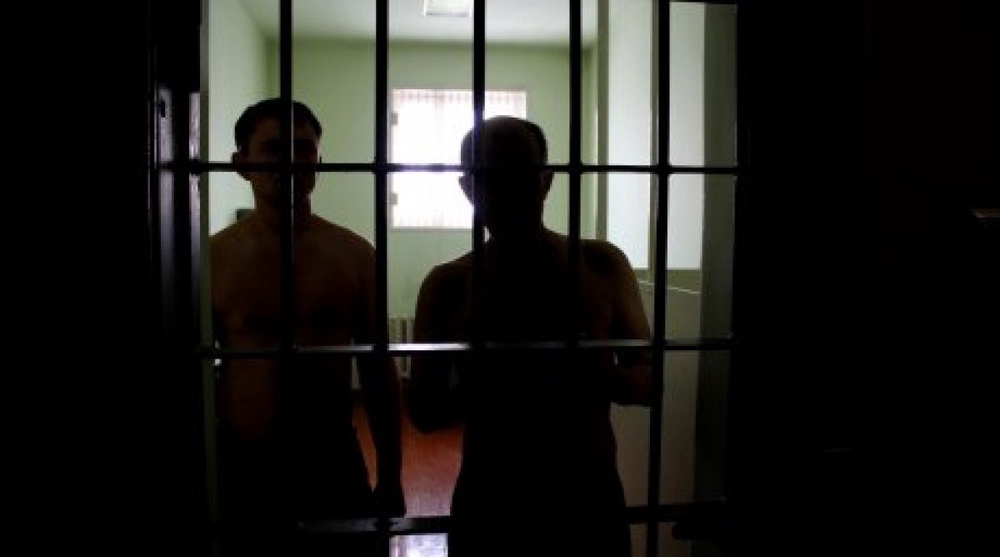
Kazakhstan has the highest incarceration rate in Central Asia, Tengrinews reports. In 2010-2012, Prosecutor General’s Office started reducing the incarceration rate. The number of incarcerated people was reduced from 63 thousand to 48 thousand. The reduction by 15 thousand brought Kazakhstan from the 22nd place to the 35th in the list of countries by incarceration rate. The number of prisoners per 100 thousand people was reduced to 295. The concept of the 10 Steps to Reduce Prison Population presented at the Prosecutor General’s Office states that despite the reduction, “this rate is twice as high as that of Europe and remains the highest among Central Asian countries”. In addition, since the beginning of 2013, the prison population has grown by 3%, from 48,404 to 49,794 inmates. The Prosecutor General’s Office named several reasons for the growth of the prison population this year. 95% of the 43 thousand incarcerated people are convicted for violent crimes. “The reduction of the prison population is not the ultimate goal and it cannot be reached through simply releasing those who have committed grave crimes. In the other words, we are not suggesting to free murderers and sadists who pose a threat to the society,” said Deputy Prosecutor Zhakip Asanov of the General Prosecutor’s Office. Besides, 18 thousand convicts have been imprisoned two or more times. And finally, improvement of crime reporting and registering has improved over the past 3 years and drove the number of convictions upwards. “Our efforts to reduce prison population must not undermine the social order, the level of human rights protection and social security,” added Asanov. The goal, according to Asanov, is to remove Kazakhstan from the list of the top 50 countries with the largest prison population. According to the Deputy Prosecutor, in the last 4 years the budget of the correction system has grown by 54%, amounting to 50 billion tenge. This sum does not include funds required for building new correctional facilities. Asanov brought up an example of how the legal system puts a financial burden on the budget for the correction system. In North Kazakhstan Oblast, a person was sentences to 3 years in prison for stealing things worth 10 thousand tenge ($67). The state spent 2 million tenge for incarceration of this individual. At the same time, the imprisonment does not always help the rehabilitation of behavior, as the number repeat offenders is still high. The project recognized that the main obstacles to reduction of the prison population are inadequate crime prevention, excessively severe criminal punishments, insufficient alternatives to arrest, barriers to the use of parole and other. As a result of the conference, the Prosecutor General’s Office identified steps and measures to keep working on the project of reduction of prison population in Kazakhstan. By Renat Tashkinbayev





Kazakhstan has the highest incarceration rate in Central Asia, Tengrinews reports.
In 2010-2012, Prosecutor General’s Office started reducing the incarceration rate. The number of incarcerated people was reduced from 63 thousand to 48 thousand. The reduction by 15 thousand brought Kazakhstan from the 22nd place to the 35th in the list of countries by incarceration rate. The number of prisoners per 100 thousand people was reduced to 295.
The concept of the 10 Steps to Reduce Prison Population presented at the Prosecutor General’s Office states that despite the reduction, “this rate is twice as high as that of Europe and remains the highest among Central Asian countries”.
In addition, since the beginning of 2013, the prison population has grown by 3%, from 48,404 to 49,794 inmates.
The Prosecutor General’s Office named several reasons for the growth of the prison population this year. 95% of the 43 thousand incarcerated people are convicted for violent crimes. “The reduction of the prison population is not the ultimate goal and it cannot be reached through simply releasing those who have committed grave crimes. In the other words, we are not suggesting to free murderers and sadists who pose a threat to the society,” said Deputy Prosecutor Zhakip Asanov of the General Prosecutor’s Office. Besides, 18 thousand convicts have been imprisoned two or more times. And finally, improvement of crime reporting and registering has improved over the past 3 years and drove the number of convictions upwards.
“Our efforts to reduce prison population must not undermine the social order, the level of human rights protection and social security,” added Asanov. The goal, according to Asanov, is to remove Kazakhstan from the list of the top 50 countries with the largest prison population.
According to the Deputy Prosecutor, in the last 4 years the budget of the correction system has grown by 54%, amounting to 50 billion tenge. This sum does not include funds required for building new correctional facilities.
Asanov brought up an example of how the legal system puts a financial burden on the budget for the correction system. In North Kazakhstan Oblast, a person was sentences to 3 years in prison for stealing things worth 10 thousand tenge ($67). The state spent 2 million tenge for incarceration of this individual. At the same time, the imprisonment does not always help the rehabilitation of behavior, as the number repeat offenders is still high.
The project recognized that the main obstacles to reduction of the prison population are inadequate crime prevention, excessively severe criminal punishments, insufficient alternatives to arrest, barriers to the use of parole and other.
As a result of the conference, the Prosecutor General’s Office identified steps and measures to keep working on the project of reduction of prison population in Kazakhstan.
By Renat Tashkinbayev


 +7 (777) 001 44 99
+7 (777) 001 44 99















































